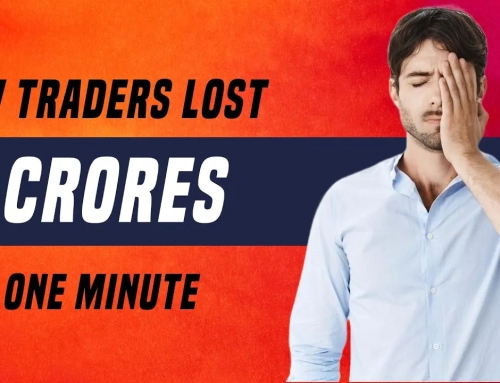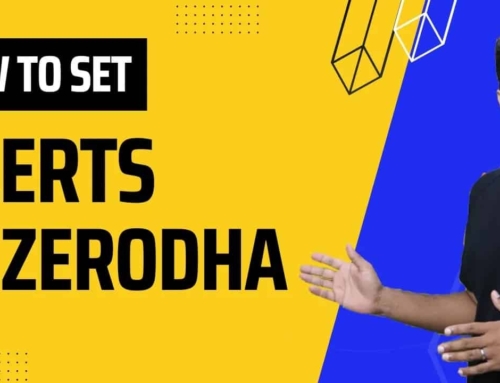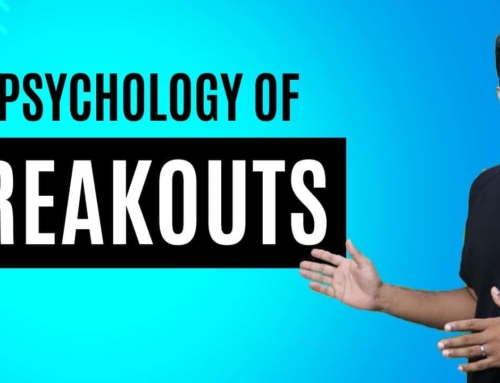What are Basket Orders in Zerodha?
Welcome to VRD Nation and as you guys know, we are big believers of efficiency in trading.We want to be as efficient as possible when we are trading, because it helps us save time and money and that is the reason why we have made a bunch of videos on different features and different platforms. So do check them out whenever you get some time.
Today’s topic is going to be another one in the series where we will talk about the feature which makes our trading process more efficient and the feature that I’m talking about is that of basket orders. What are basket orders? Well, basket orders are an interesting feature in Zerodha through which you can place multiple orders at the same time.
Some of you will say that if I have to place multiple orders, I will just place them directly. What is the need of creating a basket order and that’s a good question. If you are not an active trader and if you have to place a few trades every once in a while, then you don’t need the basket order functionality. However, if you are an active trader, you will find the functionality of basket order efficient, because like, in my case, I place hundreds of orders sometimes on Wednesdays and Thursdays and sometimes it becomes very hard to track them because there’s no logical grouping based on which we can see that this group of trades got executed.
In that sense, these basket orders provide a great benefit because I can see and track them in one go without having to shift through hundreds of orders. The real benefit of basket orders is actually for option traders and I will talk about the benefits later in the video, but let me first talk about how basket orders work.
So let’s say for example, I want to buy shares of two companies, Asian paints and Ultratech Cement. First of all, you have to go to the Orders tab and within the Orders tab, go to baskets. Now, once you reach through the screen, you will find some existing basket orders which you have already created.
You can also create new baskets by clicking this button. So let’s create a new basket order. Now, the first thing that we have to do is we have to give a name to the basket and I would suggest not to give some random name, like basket, so that later you can remember exactly why you placed that order.
In this case, I’m doing long-term investments and hence I’m just going to say investments. Now, after we give the name, we have to add orders to this basket, and it is pretty simple. What I have to do is to just search for the stock name, select it, and then this order entry screen will pop up. Now, this is just a regular order entry scheme and we have to make sure that we are giving all the details correctly, whether it’s a buy order or a sell order, what is the quantity? What is the price? Is it a limit order? Is it a market order? Nothing different but everything that we normally do and once we are done, we just have to add. Remember when you say add, you’re not placing that order at this stage and it is only added to the basket.
As you can see here right now, what you can do is if you hover over this row, you can do a bunch of things. You can copy this row to create another row or you can edit that order or you can even delete it. Asian Paints is done now and so let me add another stock UltraTech Cements.
For that too, I will follow the same steps. This is how you can create basket orders and within one basket order, you can go up to 20 orders. When everything is done, all you have to do is click on the execute button. One thing to note here is that the word execute is a little misleading.
What his button is doing is only placing these orders. Now, whether or not these orders will get executed is up to the conditions that you specified in your orders. For example, in my case, I placed two orders. Asian paints got executed, but the one for ultra tech cement, they got rejected because my cash balance was tied up in some other trades.
So the system did not have any cash balance to execute it.After you had placed the basket orders, you could always come back to the basket to track the progress. You need not track each of them separately and that is one of the reasons why we use these orders. Another thing that Zerodha has given is that you can see these active orders minimized for easy access.
Sometimes it looks a little annoying because I don’t want anything blocking my screen, but I think it’s also a handy feature for some of you. You can just start to click on this little icon and then you can get quick access to the basket orders. So that is how basket orders work in Zerodha.
Now let me talk about the real benefits of these orders, which is in the case of Options Trading. Let me take my own experience and as you all know, I’m an active options trader and am very active on Wednesdays and Thursdays. I literally place hundreds of orders on these days because I execute what is called expiry date strategy.
My quantity sometimes can be very huge and as you can see, they can be 2000, 2,500, 3000, and sometimes when I’m going big, I can even go to 10,000 or even 15,000. Now, if I have to build such a large position, I cannot do it in one shot because there is a system limitation on the maximum quantity that you can have. In the case of Nifty, it is 1800 and something else in case of Bank nifty and stocks.
If you have to build a bigger position like this, you need a more efficient way to place multiple orders. The same goes with exiting these positions. If I have to exit these positions, I cannot just say exit and get out of all these quantities.
I have to place multiple orders because every order has a maximum limit. What I do normally is that let’s say, for example, in this particular trade, I use basket orders and it’s actually very easy because they have something called as a repeat functionality where you can just copy one order and then all you have to make sure that your overall quantity matches with the position that you are in.
That was one big benefit for the basket orders, but I think a bigger benefit of using a basket order is for those of you who want to take advantage of the Margin benefits. So what exactly is the margin benefit?
Well, as some of you might be aware that SEBI, our market regulator has incentivized traders to trade more responsibly, which means that anytime you hedge your position, you can trade with the smaller capital as compared to a trade where you are not hedging at all. Let me take an example for that and create a basket order here.
I’m just going to call it a margin benefit demo. Let’s say I want to sell 17,000 call option on nifty and the current price is around 200. I’m going to make it as a Sell and make it as a market order. It’s going to add it and as you can see here, if I have to sell one lot of this option, I have to provide a final margin of 82,000 rupees.
You will see that there are two fields, required margin and final margin. The required margin is the amount that you need to place all the orders in the basket and final margin is the eventual margin that will be blocked in your trading account after all the orders get executed.
Final margin is what you really want to be focusing on. For one lot, if I have to block 82,000 rupees, that seems like a lot of money and hence what I can do is I can buy an out of money option to reduce this margin requirement. In this case, what we can do is I can buy a 17,500 call option, an out of money call option, and I will add it here.
You can see immediately from 82,000 rupees, the final margin requirements has gone substantially down to only 35,000 rupees. In this basket order, you can have multiple positions and you can see what is a margin requirement. One thing which is extremely important and which you need to understand here is that the sequence in which the orders are arranged here is a sequence in which these orders will be placed.
If you want to get the margin benefits, the best way to do it is to make sure that you drag this guy up, the Buy should be executed first and then the Sell should be executed. That is the only thing that you have to keep in mind because once the buy gets executed, automatically you have the insurance and because of the insurance or the hedge, the margin requirement for this trade will eventually come down.
That is it guys and it is what I wanted to share with you guys in this video. I hope that you got the sense of what the basket orders are and how to use them. There are some other features where you can export, import and analyze the basket.
There are a bunch of other things you can try out, but, the more you play around with this, the better you will understand. I hope that you will experiment with this feature and benefit from this functionality.
In today’s session, we will understand Max Pain theory.
Before we talk about the subject let us make a few things clear.
Number one, for you to understand this, you need to have some basic understanding of options and without that you will not be able to understand this video.
Number two, this theory only works for stocks and indices that are trading in the futures and options segment. We have about 200 stocks in the F&O segment and hence this theory can be applied there.
Finally, the most important thing is that for this theory to work, that stock or index has to be highly liquid which means that it has to have a lot of trading activity. With that said, let’s try to understand the gist of this theory.
The theory says that there are two types of traders, option buyers and option sellers. Now, option buyers are people like you and me who do not have a lot of money. I mean, we do have money, but not a lot and we also don’t also have any insider information in the market. For the lack of a better word, this theory assumes that option buyers are nothing but gamblers.
Now, on the other hand, we have option sellers who are usually the big institutions, people with a lot of money, a lot of inside information, world-class infrastructure, etc. The theory assumes that these are the guys that are the casinos in this equation. As per this theory, Option buyers are gamblers and option sellers are the casinos.
Basically, this is a zero-sum game which means one person’s gain is another person’s loss and the core philosophy of Max Pain theory is just like casinos, option sellers will always win in the long run. Based on this philosophy, the Max Pain theory says that any stock or index will gravitate towards the price where the losses with the option bias are maximum.
This is where the option buyers will experience maximum pain. This might sound a mean way of looking at the world to say that Option buyers are always losers and options sellers are the winners, but that is a simplistic assumption that this theory has made about the real world.
Let’s talk about where can we find max pain related information. There are many websites that show Max Pain and currently, I’m using niftytrader.in, but you can find this information on almost any website or app related to Options. Now when you go to these websites, this is how max pain is usually represented and the calculation behind this chart is done a little differently by each website, but that is not very important.
What is important is how do we interpret this chart? The first thing that you need to know is that when you see this chart, you have to see from an option seller’s perspective, not the option buyers. The x-axis here is very simple and it just shows the price of the stock of the index.
In this example, we are using NIFTY and so the x-axis shows the different price points of NIFTY. Now the Y axis shows the loss that the options sellers will incur. You will also notice that there are two colors that are used here, red and blue. Let’s start with red first and so the red bars right here, they show the loss to Put Option Sellers if NIFTY went down.
Currently, say, NIFTY is at 16,300 and so if NIFTY starts to fall, the market starts to fall and then you will see that the Put Option Sellers will incur more loss. In the same way, the blue bars represent a loss to the Call Option Sellers. If the market went up, say, to 17,000, 18,000 or 19,000, this is how much loss the Call Option Sellers will have to incur all. So based on this information, Max Pain theory says where is the price point, where the loss to the put option sellers and the call option sellers combined will be the least. The price at which the total maximum loss to option sellers is the least will be the price at which the option buyers will experience maximum loss or maximum pain.
Based on that, the theory predicts that the expiry will happen somewhere close to that price and that is the logic behind this Max Pain theory.
However, there are a few things which I want to confirm. Number one is Max Pain theory is not a magic formula and it doesn’t always work. The second thing is that it’s always backward looking and any big event at the market can substantially change the way the graph looks at any point of time and you should be aware of that.
Finally, just like any technical indicator, it should be paired with other factors to make your trading related decisions. Anyway, we will discuss many of these aspects in the future videos, but in this video, I hope that at least you understood the core concept of max pain.
If you want to test your understanding of max pain or test your understanding of options or stock market in general, we have created a bunch of quizzes that I will highly encourage you to take and test your knowledge.
The link for the same is https://www.vrdnation.com/stock-market-quizzes/



![What is Virtual Contract Note [Zerodha]](https://www.vrdnation.com/wp-content/uploads/2023/10/maxresdefault-virtual-note-500x383.jpg)



Leave A Comment